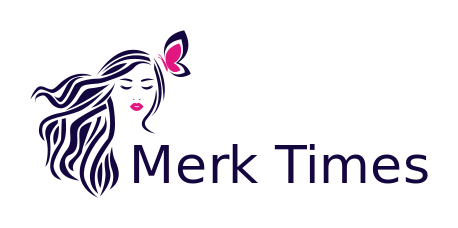Key Takeaways:
- Comprehending the wide-ranging impact of sexual harassment on employees and work culture.
- Legal frameworks and policies as the backbone of harassment prevention strategies.
- The transformational role of employee training programs in reducing workplace harassment.
- Highlighting the subtleties of harassment and the importance of reporting mechanisms.
- Leadership commitment to creating supportive, harassment-free workplaces.
Table of Contents:
- Introduction to Sexual Harassment Awareness
- Legal Frameworks and Sexual Harassment Policies
- Training Programs and Their Role in Prevention
- Identifying Sexual Harassment: Subtle Signs to Watch Out For
- Reporting Mechanisms: Empowering Employees to Take Action
- The Role of Leadership in Addressing Harassment
- Supporting Victims: Resources and Recovery
- Fostering an Inclusive Culture Free of Harassment
Introduction to Sexual Harassment Awareness
Societal discussions have elevated the profile of sexual harassment, highlighting its presence in various sectors, from corporate offices to manufacturing floors. As a notorious contributor to toxic work environments, sexual harassment undermines individual dignity and organizational integrity. To dismantle such harmful practices, raising awareness is seminal, not just within the human resources department but among all employees. An inclusive sexual harassment training course provides a solid educational foundation, equipping staff with the knowledge and skills to identify and address inappropriate conduct.
The narrative around sexual harassment has shifted from being a taboo topic to a critical workplace concern that demands open conversation and swift action. Awareness initiatives help to clarify misconceptions and underline the seriousness of the issue, emphasizing that harassment of any form is unacceptable and punishable by law. Through such enlightenment, we propagate environments where respect and personal boundaries are non-negotiable, and safeguarding employee well-being is a shared responsibility.
Legal Frameworks and Sexual Harassment Policies
Any discourse on sexual harassment necessitates a detour through legal corridors. In the United States and numerous other countries, workplace harassment is not merely frowned upon; it is a violation of anti-discrimination laws. These laws stipulate the responsibilities of employers in ensuring a harassment-free environment and outline the rights of employees to a safe workplace. However, knowledge of these laws is common. Comprehensive training and clear policies are indispensable in educating employees about their legal protections and the implications of contravening such laws.
Proactively, organizations must translate legal requirements into actionable, coherent policies that leave no room for ambiguity. These policies need to be championed by management and integrated into the company culture. An explicitly stated zero-tolerance stance, coupled with a well-outlined procedure for handling violations, sends a powerful message to the workforce: sexual harassment will not be brooked, and decisive action will be taken against any infringing parties.
Training Programs and Their Role in Prevention
Empirical evidence underscores the efficacy of well-crafted training programs in mitigating workplace harassment. The paradigm is evolving from simple lecture-based sessions to interactive workshops that foster engagement and reflection.
A poignant sexual harassment training course weaves in real-life scenarios, enabling employees to relate to and better comprehend the nuances of harassment. Such programs go beyond the “check-the-box” compliance mindset, instilling a holistic understanding that influences behavior and normalizes speaking up in the face of wrongdoing. One of the cornerstones of these programs is the empowerment they provide. By clarifying the avenues available for employees to address concerns, training ensures that ignorance is not a barrier to justice. These programs also reinforce the notion that everyone in the organization, irrespective of their role or seniority, is subject to the same standards of respect and conduct, dispensing with untouchable power dynamics.
Identifying Sexual Harassment: Subtle Signs to Watch Out For
Sexual harassment often reveals itself in insidious ways that may seem innocuous at first glance. Yet, these early signs—undue attention or invasive comments—are the sinews of a hostile work environment. Recognizing these signals necessitates an understanding that harassment can manifest in various behaviors, from derogatory remarks to unwelcome physical contact. It also calls for collective vigilance, wherein employees feel responsible for maintaining a dignified workspace and empowered to challenge inappropriate conduct.
This attentiveness to subtler forms of harassment underscores the critical need for organizations to nourish open communication channels. These channels not only assist in detecting and deterring harassment but also promote camaraderie and collective accountability, which are central to an enterprise’s intangible ethos—its culture.
Reporting Mechanisms: Empowering Employees to Take Action
Effective reporting mechanisms are the backbone of a viable anti-harassment framework. We must ensure that systems that facilitate harassment reporting are accessible, efficient, and trustworthy. These mechanisms underscore a commitment to action rather than mere performativity. By offering a medley of reporting options, organizations convey a powerful message—every voice matters, and every concern deserves attention.
To this end, the workflow of responding to complaints should be characterized by promptness, confidentiality, and fairness. The ultimate objective of these reporting mechanisms is to resolve individual cases and engender an atmosphere where employees feel advancing a complaint equates to catalyzing positive change without repercussions.
The Role of Leadership in Addressing Harassment
The fount of a harassment-free workplace is leadership that is resolute in its stance against inappropriate conduct. Leadership sets the standards to which all employees are expected to adhere. By exemplifying those standards, leaders anchor the values that will permeate throughout the organization, demonstrating that respect and equality are the linchpins of the enterprise’s identity. This clarity of purpose from management propounds the gravity of harassment issues and establishes robust precedents for handling infractions.
A concerted effort by leadership in modeling and reinforcing anti-harassment policies influences the collective behavior of the workforce, crafting a protective shield against toxic behaviors. Hence, leadership’s commitment to rhetoric and action serves as the keystone in crafting an environment that is not merely compliant with the law but reflects a progressive and humane corporate philosophy.
Supporting Victims: Resources and Recovery
The journey does not end with identifying and addressing harassment; it extends into the realm of victim support. Victims of such behavior often carry psychological scars that can impact their work performance and social dynamics. It is paramount to provide an ecosystem that includes professional counseling, legal assistance, and reassurance of their value to the organization. Ensuring that victims have access to the necessary resources for recovery emanates the company’s genuine care and regard for its workforce.
It is also incumbent upon the employer to safeguard the victim’s continued career development, assuring them that reporting harassment will not hinder their professional trajectories. Embracing a transparent approach in dealing with cases and subsequent outcomes cultivates trust and reinforces the belief that the organization stands with victims, not against them.
Fostering an Inclusive Culture Free of Harassment
Adherence to diversity and inclusion principles is morally right and is an antidote to sexual harassment. In an inclusive culture, everyone feels valued for who they are and what they bring. Through conscious efforts to integrate diversity in all facets of corporate life—from recruitment to team gatherings—an organization can render harassment unnatural and antithetical to its core values.
Embracing a workforce with various backgrounds and experiences enriches the collective intellect and engenders a culture of respect and mutual understanding. When people recognize the strength in their differences rather than fear them, the likelihood of harassment diminishes, and the prospects for collaborative success peak.

